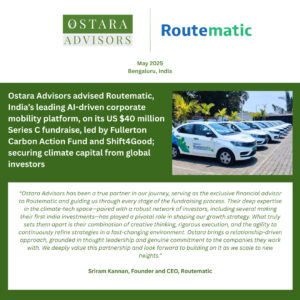Welcome to Our Newsletter on the Net Zero Transition across the world and in India!
COP29, held from November 11 to 22, 2024 in Baku, Azerbaijan, brought global leaders together to confront the escalating climate crisis. With the urgency to address rising temperatures, it’s more critical than ever to spotlight the biggest contributors to emissions and drive targeted action for a sustainable future.
Taking Stock of Where We Are
The 1.5°C global warming threshold has not been permanently crossed, but temporary breaches are increasing, signaling the urgent need for action. Current climate policies fall far short of Paris Agreement goals, with the world on track for a catastrophic 3.1°C rise if commitments aren’t strengthened. Record-high emissions in 2023 and unfulfilled Nationally Determined Contributions (NDCs) widen the gap between pledges and action, putting lives and ecosystems at risk. COP29 is seen as a critical moment to reset the course and accelerate climate action to avoid the worst impacts.
The graph shows projected GHG emissions under current policies, unconditional Nationally Determined Contributions (NDCs), and conditional NDCs, highlighting the inability to achieve global emissions reduction goals even with full NDC implementation.

(Source: UNEP Emissions Gap report)
Key Discussion Points from COP29
At COP29 in Baku, key discussions focused on securing a new climate finance goal to support developing nations, with calls for $39 billion annually for Small Island Developing States and $220 billion for Least Developed Countries. The form of this funding and the definition of “developing country” are major points of contention. UN-Habitat highlighted the urgent need for sustainable urban planning, as cities contribute 40% of emissions and are highly vulnerable to climate impacts. Tourism’s role in climate change is being addressed for the first time, while UNEP reported a 1.3% rise in global emissions in 2023, stressing the need for a 42% reduction by 2030 to meet the 1.5°C target. Renewable energy transitions were also emphasized as a critical solution.
Key Global actions needed to mitigate climate change
To hit net-zero by mid-century, we need a rapid overhaul of energy, transport, agriculture, and forestry.
This transition must be fair, supporting workers in high-carbon industries, and leverage cost-effective clean tech like solar and wind. Carbon removal will also help tackle emissions from hard-to-abate sectors, keeping the 1.5°C goal within reach. The same is depicted in the picture below:

India’s journey towards Net-Zero
India’s energy transition is anchored by three fundamental pillars – 1) grid decarbonization, 2) industrial decarbonization, and 3) transport transition. These three pillars collectively form the foundation of India’s energy transition journey and can address ~90 percent of India’s current emissions.
1. Grid Decarbonization
- The International Energy Agency projects that over the next three years, India will add electricity demand roughly equivalent to the current consumption of the United Kingdom. Almost half of this demand growth is expected to be met by renewables.
- Hydro remains India’s main clean electricity source at 8%. Solar and wind combined reached almost 10% in 2023. However, this is still below the global average (13%) and its neighbors Japan (12%) and China (16%).
- India set a new record, installing about 17.4 GW of solar capacity from January to September 2024. Meanwhile, India’s wind energy installation continues to grow rapidly, with installed capacity by about 5% last year.
2. Industrial Decarbonization
- While grid decarbonization can address ~46 percent of India’s emission from the electricity sector, industrial decarbonization can address another ~30 percent of the country’s energy related emission.
- Hydrogen is essential to decarbonizing steel production. The Indian government is promoting the use of green hydrogen for blending in compressed natural gas (CNG) for city buses as part of the National Green Hydrogen Mission launched in 2023. This creates a market for not just green hydrogen production but also for hydrogen storage, transportation, and dispensing infrastructure.
- Biomass co-firing/substitution can be used in thermal power generation processes like those required for cement and aluminum production in order to reduce the overall carbon intensity of such processes. A driving force for solid biomass use is the co-firing mandate issued by the Ministry of Power in 2021 which has been updated to a target co-firing rate of 7% for FY25-26.
- Decarbonizing Transportation
- India’s transport sector significantly impacts national emissions, with road transport alone accounting for 92% of the sector’s energy use and contributing 20 to 30% of the country’s urban air pollution as of 2024.
- BEVs run solely on electricity stored in batteries and emit zero tailpipe emissions. Rapid advancements in battery technology and expanding charging infrastructure make BEVs one of the most viable options, especially for passenger vehicles and light-duty transport.
- FCEVs use hydrogen to generate electricity via fuel cells, emitting only water vapour. FCEVs are promising for heavier vehicles like buses and trucks due to their quick refuelling times and longer range compared to BEVs.
India at COP29
At COP29 in Baku, India, led by Kirti Vardhan Singh, pushed for accountability and fair climate finance to support vulnerable communities, urging developed nations to honor their climate finance commitments. As a growing economy, India advocates for an equitable energy transition that balances climate goals with development needs. India expressed disappointment at the shifting of focus from enablement of adequate climate finance to emphasis only on mitigation.
India’s statement at the plenary session concluded “If we fail here, we fail in the fight against Climate Change for which the onus should be on those who are obligated to provide finance for climate action.”
Ostara in the News
- Our Founder and CEO, Vasudha Madhavan, has been featured in the latest season of MG Changemakers by The Better India in partnership with MG Motor India. This series celebrates women breaking barriers and driving impactful change.The feature sheds light on Vasudha’s journey in founding Ostara Advisors, India’s first investment bank focused on electric mobility and decarbonization.Read more about the feature on her LinkedIn post and stay tuned for the main video!
- Vasudha shared her insights in the Hindu BusinessLine on November 13, 2024 on the growing trend of EV start-ups adopting an asset-light model through micro-factories.She emphasized that, “New EV start-ups are prioritizing proprietary technologies in battery systems, software architecture, and motor efficiency, while outsourcing traditional parts and assembly to contract manufacturers.”Check out the post for more details!


















